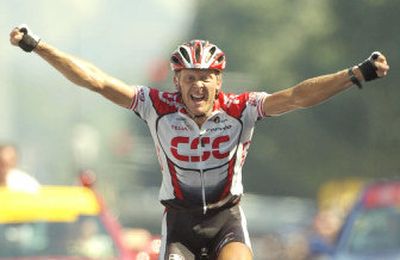At the core

We hear a lot from cyclists who wonder why they experience pain – typically in their knees and/or back – during long bike rides. For some, the answer is simple: “Sit on the seat,” we say, “not the handlebars.”
For others, the solution might require a little more work. Assuming you’ve already confirmed that your bike fits properly (poor bike fit can contribute to back and knee pain), you might take a lesson from a study presented at the American College of Sports Medicine’s annual conference in early June. That research shows that core strength – that is, strength of the abdominal, oblique and back muscles – is key for cyclists who want to pedal strong for long distances.
The study examined 15 competitive cyclists ages 23 to 45 who completed a series of cycling exercises at a University of Pittsburgh research facility, then returned a week later for a regimen of core-fatiguing exercises followed by another cycling workout. The results: Core fatigue resulted in altered cycling mechanics – namely, adjustments in knee and ankle position – as the participants tried to maintain pedal force.
Those adjustments, which recreational and competitive cyclists make automatically in response to core fatigue, could be at the root of many riders’ complaints, said John Abt, the study’s lead researcher and a postdoctoral fellow at the University of Pittsburgh’s Center for Sports Medicine. “If you are continually fatigued or weak, you are setting yourself up for the potential for injury.”
Abt said his findings apply to recreational cyclists – especially weekend warriors, “people who ride 20 or 30 minutes on an exercise cycle a couple days a week (and) then go out on a Saturday and try to go for four hours with their friends.”
The core is the powerhouse for all of your extremities, Abt explained, and cyclists with weak or tired cores tend to “flap their legs,” introducing a sideways, semicircular motion instead of the more efficient up-and-down motion. “This results in abnormal tracking of the patella on the femur,” Abt said. Over time, that could cause knee injury.
Back pain occurs usually after significant distance – precisely how long depends on the rider’s conditioning – when the core is too exhausted to power the legs and keep the rest of the body in proper alignment.
“If you hit 25 miles and your back really starts to hurt, you can move around in the saddle or climb out of it, but basically you are shot” in terms of finishing the ride pain-free, Abt said.
How to strengthen your core? Alas, this will sound familiar: crunches, back extensions (essentially upside-down sit-ups using gym gear, where you bend forward from the waist and lift your torso back up using your lower back muscles), lat pull-downs and other core builders we routinely prescribe. For the thoroughly deconditioned, Abt recommends starting with one to two sets (10 each) of basic crunches a few times a week combined with simple back exercises twice a week.
For people who have established some core power, Abt recommends two to three weekly workouts using a stability ball. The inflated spheres “help recruit other muscles” because using the ball requires an element of balance. Circuit training also employs core muscles; two to three circuit sessions a week should be sufficient to keep most recreational cyclists fit for riding.